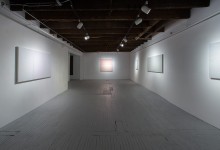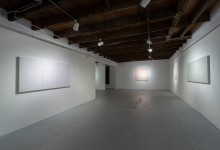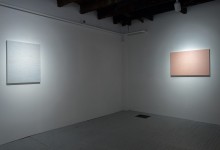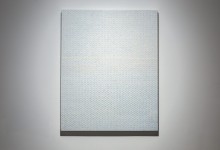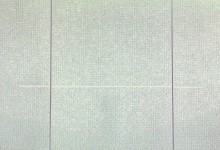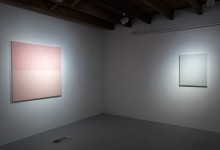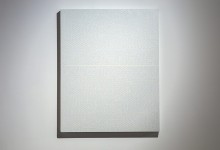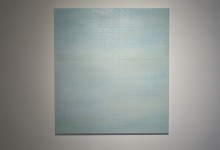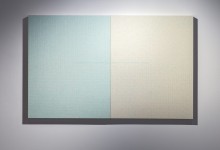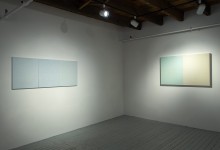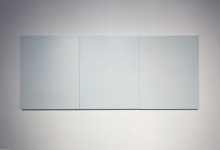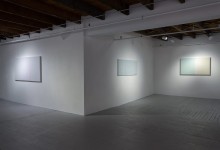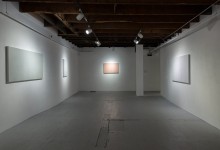Opening reception: Saturday, July 15, 2017 from 3-5 p.m.
Christine Nobel : Places
Art Mûr, Montreal (QC)
Text by Terence Sharpe
There is a complex metamorphosis that takes place when encountering a painting by Christine Nobel. While drawing from her own perceptive processes, a viewer’s account can also lead to associations with serialism, pointillism and phenomenology. Multi-dimensional iterations affect the viewer depending on their physical position in relation to the work. The field of vision is something Nobel constructs to convey the fragmented materiality of all objects affected by light. While appearing to be abstract, these works are most certainly figurative and rooted in perception of the real. The metamorphosis that takes place is one of transformation from Nobel’s own act of seeing, into the physical manifestation of these processes and finally the seen. An interesting thought at this point is what is the seen, and where does it happen?
In Field (2016) the viewer is presented with a triptych of plains circumvented with a lower middle level line, creating a clearly delineated plain for optical assertion. Nobel is true to her material here, utilizing two-dimensional objects collectively to develop a field of vision that is malleable in the action of seeing. Spring (2017) evokes a sense of warmth through two panels, once again being crossed by a horizontal line creating a point of perspective for the viewer in which they can align themselves. Despite that we are presented with a sequence of braced forms, these works present us with unmediated truthfulness of nature within the perception of the artist. In Emerging (2017) we move once again into three sections, and like the others when viewed from a distance we see a gradient of light shifting, almost causing the panel to expand and contract before our eyes. Mist II (2017) stirs the olfactory, lulling the viewer who is willing to submit to the works vast expanse of violet hues and scattered amber.
In 20th Century continental philosophy one can read at length about the concept of extensive and intensive multiplicity. On the theme of repetition and sequence, both expertly used in Nobel’s work. we can draw on the example of the tolling of bells. The experience of multiplicity, in the ringing of these bells has nothing to do with sequence as thought of in scientific terms. When one hears a second bell, it is heard in relation to the first, and when a third rings out, it is heard in the context of the two that came before it, and so on and so forth. We must consider this flux of the durational when viewing each brush stroke in Christine Nobel’s works. The temporal nature of experience is not something that is quantifiable. Nobel’s works are more then the sum of their parts, each iteration is part of a larger phenomenological experiment – a process which involves the viewer to complete the process of what is seen.


